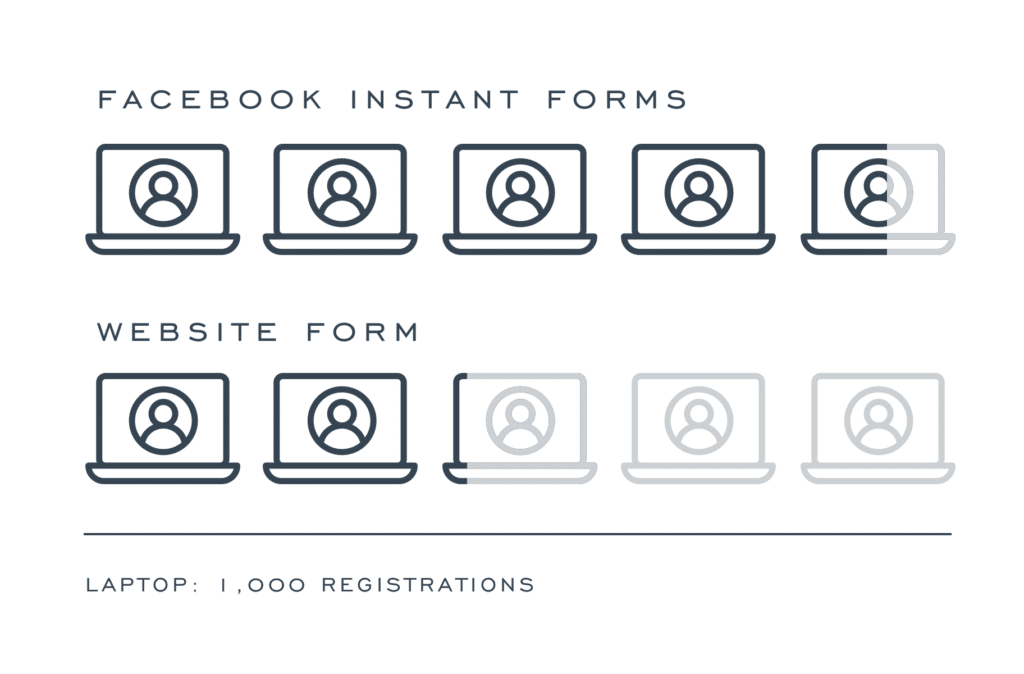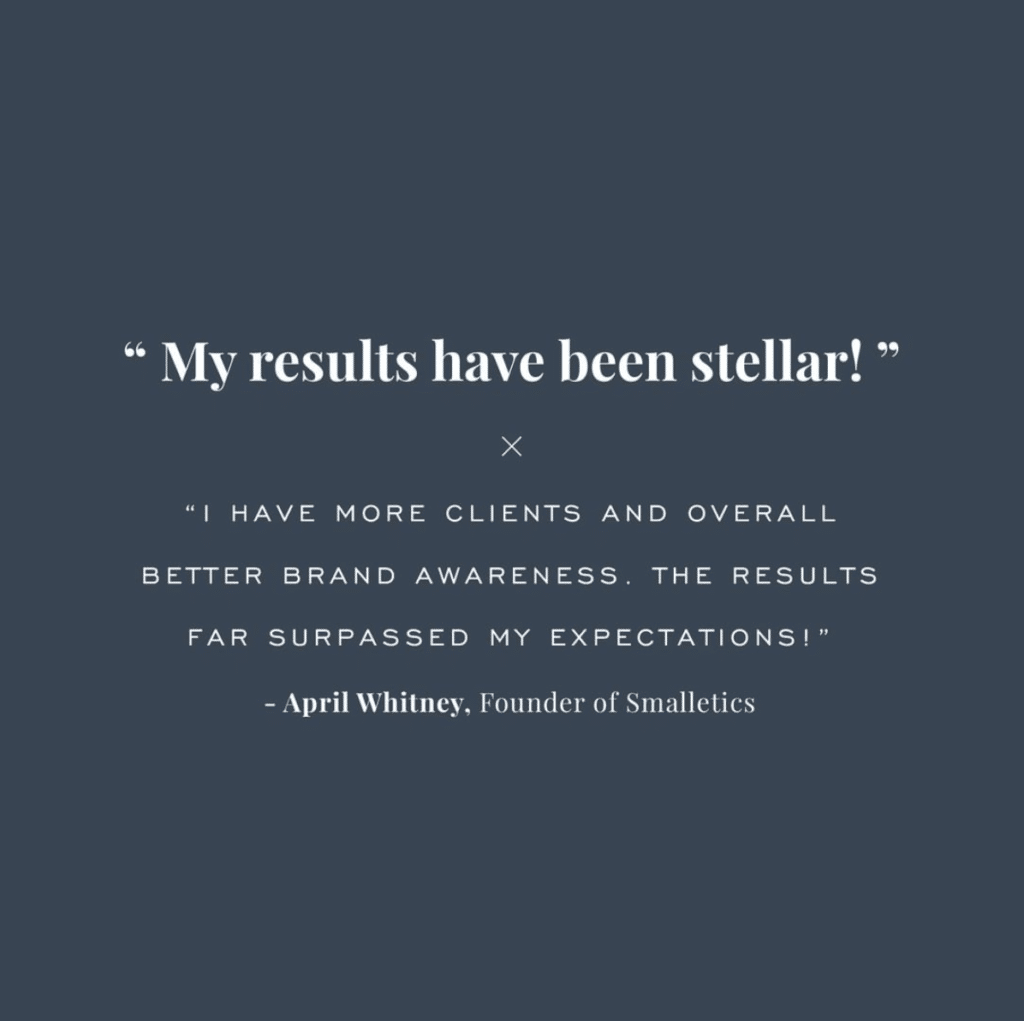It’s the ultimate lead gen showdown: Facebook Ads Instant Forms vs. Landing Page Forms!
How is a business supposed to take a huge pool of potential customers and eventually turn them into, well, paying customers? It all depends on building a relationship with them, so they can see the value you offer, trust your brand, and feel confident in spending their money with you.
In some (ideal) cases, all it takes is one ad. But with a huge portion of your potential customer base, you’re going to need to stay in touch.
Staying in touch means getting their information. Hence why lead generation can be such a game changer for your marketing efforts—you offer them a free sample that demonstrates your business value in exchange for information like their name, email address, or specific interests, all of which they enter into an online form and submit to you. (Check out our formula for a winning combo in our post about lead gen ads and email marketing here.) In this regard, you have options, chief among them being either Facebook Ads instant forms or landing page forms.
So, which one is better? Good question! Let’s take a look at the pros and cons of both Facebook Ads instant forms and landing page forms, as well as what you should consider when you’re making your choice.
Understanding Facebook Ads Instant Forms
What are Facebook Ads Instant Forms?
Switch from your marketer/businessperson mindset for a second and think about your experience as a consumer. Have you ever been browsing through Facebook and seen a sponsored post that let you sign up for more information, a newsletter, a free download, or membership directly there on the Facebook platform?
These are lead forms built directly into Facebook. They let advertisers (in other words, businesses such as yours) create a form and collect information from users who are interested in their products or services, and they’re able to do it directly there within Facebook—no need to click and go to an outside platform or website.
You’re able to create this kind of lead generation campaign just as you would any other ad in the Facebook Ads Manager, and you’ll be able to define the campaign objective, target audience, ad creative, budget, and other campaign settings. (Click the link to learn about Facebook lead ads directly from Meta.)
Advantages of Facebook Ads Instant Forms
Compared with lead forms that let you collect information directly through your website, there are a few advantages to using lead forms on Facebook. Consider this:
- Higher conversion rates: Facebook lead forms tend to have a higher conversion rate because a user’s information is practically already filled in for them. If they previously entered similar information on Facebook, all they have to do is click the box to type it in and their pre-filled information appears. This makes it much easier for them.
Furthermore, a Facebook lead form is much more convenient because it’s already optimized for use on your smartphone—the device that the average person is going to be using when they see an ad. If they have to bookmark the ad and come back to it later when they’re on their laptop, there’s less of a chance they’ll follow through. - Seamless user experience: Say what you want about Facebook, but many people trust it. At least, they trust it more than they do a platform or website they’ve never been on before. Many people feel more comfortable entering information into a Facebook form. Plus, because the form is built into the Facebook platform, there’s not the same drawn-out loading time that you might have with a form built into your website.
- Increased ad relevance: As a platform, Facebook has undeniably powerful targeting capabilities. This makes it much easier for that lead form to reach the right people than it would be if you were trying to drive traffic to your website via a search engine or even a separate Facebook ad. Thanks to Facebook’s ad targeting, you can reach specific audiences based on all kinds of factors, such as their demographics, interests, and behaviors—so you get in front of people who will actually care about what you have to offer.
- No pixel required: Setting up Facebook Ads instant forms doesn’t require the installation and configuration of a pixel on your website because all the information is collected through the Facebook platform. That great, as sometimes a pixel on your website can result in data loss—which is never a good thing!
- A great front-end for webinars: Your use of instant forms doesn’t need to be limited to lead campaigns. It requires a little more setup to connect everything, but instant forms can be a great front-end registration form for webinars.. Why not use instant forms to front-end this content?
Disadvantages of Facebook Ads Instant Forms
With all of that said, there are some drawbacks to Facebook Ad lead forms. Here are some of the problems you might run into if you’re collecting leads directly through Facebook Ads:
- Limited design customization: Although Facebook Ad templates offer some variety and customization options, they’re still templates—the design options and layout are relatively standardized, and you have less control over the overall branding and user experience. On top of that, if there are any technical issues or changes to the Facebook platform, it could affect the performance and accessibility of your lead forms.
- Data privacy concerns: Remember how we said some people are more comfortable entering information into Facebook than they are when it comes to other platforms? Unfortunately, there’s some divided thinking—and a lot of people have their reservations when it comes to personal info on Facebook, despite Facebook’s statements that it takes concerns about privacy and data protection seriously. When you’re using Facebook lead forms, it’s important to be aware that the captured data resides on Facebook’s platform. Yes, you will have access to that data, but the data is still subject to Facebook’s terms and conditions, and you may have limited control over how the data is used or accessed by Facebook itself.
- Potentially inaccurate data: Remember the benefit of Facebook Ads instant forms where lines can be auto-filled with previously entered information? That can also be a drawback, unfortunately, if people are using an old email address (such as their college email) and it is associated with outdated information.
- The need to integrate with your CRM: To make use of the information you’re collecting through Facebook, you’ll still need to integrate the Facebook platform. This can be technically complex, especially if you don’t have prior experience with integrations or configurations like this. In this case, you might require assistance from a developer who can ensure a seamless and reliable connection between the two systems, which would defeat the appeal of Facebook’s simplicity.
Understanding Landing Page Forms
What Are Landing Page Forms?
Facebook isn’t the only place where you can collect a customer’s data using a lead form. You can also have one built directly into a landing page on your website. Let’s say you’ve got a great Facebook Ad that’s generating a lot of traffic—maybe the CTA button takes them off Facebook and to your website, where they’re provided more information on your lead gen offer and guided to enter the typical info into a form to access your offer. On your website, you can integrate the form with other systems, such as your CRM or email marketing platform. That means as soon as somebody types in their email address, they’ll be added to your newsletter—making it a great way to build your customer base and keep them informed about the latest offers.
Advantages of Landing Page Forms
The concepts of landing page forms and Facebook Ad forms are the same, but there are key pros and cons to each. Some of the advantages you’ll get with landing page forms include:
- Greater design flexibility: While lead forms on Facebook are limited to what you can do with the platform’s templates, that’s not the case on your own website, where you have much more creative control over the layout and branding. You can design the form to align with your website’s aesthetics for a much more consistent customer experience. Plus, when you’re the one who is designing every aspect of your form, you can include specific form fields that align with your business needs, gathering the most relevant information for effective lead nurturing.
- Better tracking and analytics: Although you get tracking and analytics with Facebook Ads, they’re not as specific as what you can achieve on your own website, which you can integrate with Google Analytics. Tracking and analyzing will let you calculate the conversion rate on web visitors who actually complete the lead form, as well as how much time they spent on the form, scroll depth, and click patterns. This helps you figure out where visitors had trouble, got distracted, or maybe abandoned the form entirely. All of these analytics are crucial for figuring out holes in your funnel and determining how you can improve in the future.
- Control over user data: The data you collect is yours and only yours—you can safely promise your customers or potential customers that nobody else will have access to it, which is not something you can guarantee them when that info is collected via Facebook. Just as importantly, you can ensure your website is designed to comply with the General Data Protection Regulation (GDPR) requirements and other regulations that govern collection, storage, and processing on people’s personal (and often sensitive) information.
Disadvantages of Landing Page Forms
Now for the downsides to having that lead form directly on your website. Here are some ways that a landing page form doesn’t compete favorably with Facebook:
- Potential for lower conversion rates: The reality is that you just might not see as high a conversion rate with a landing page form as you would with Facebook. This is because you’re asking for an additional step for users—even if it’s just asking them to click through to your website, this added step can be a surprising turn-off for some users. It takes them away from content they were originally looking at, and they would rather stay on the Facebook platform. There’s also the risk that your website could have a slower load time, which can leave your leads feeling frustrated and more likely to bounce.
- Costlier setup and maintenance: If you want to add a lead form to your website, it might cost you. Creating and maintaining a lead form on your website requires development effort and expertise. If you don’t have the technical knowledge or resources in-house, you’ll have to allocate budgeting for a designer to help you with it. You’ll also be responsible for the maintenance, security, and data protection. This includes regular updates to prevent vulnerabilities, security measures to protect user data, and compliance with data privacy regulations.
Comparing Facebook Ads Instant Forms vs. Landing Page Forms
Factors to Consider
There’s no right-or-wrong, one-size-fits-all answer as to whether Facebook Ad lead forms or landing page forms are better. However, you can make an informed choice as to which one is better for you and your business specifically. Consider this:
- Business objectives and goals: If you’re aiming to generate a large volume of leads, and you want to generate them quickly, then Facebook lead forms can be effective. The platform offers extensive targeting options, allowing you to reach a broad audience and capture leads directly within the Facebook ecosystem. It’s great for expanding your reach and generating brand awareness—in other words, finding those leads you want.
On the other hand, if your goal is to capture higher-quality leads who have already shown a strong interest in your brand or products, then lead forms on your website might be more effective. Users who actively visit your website and engage with your content are more likely to be further along in the buying journey and could potentially convert at a higher rate. - Target audience and platform preferences: Ask yourself how broad a range of leads are you looking to reach? If your target audience is niche-oriented or hyper-specific, then focusing on the ones that are willing to click through to your website and actually learn a little more about your brand could be a better option than collecting as many people as possible via Facebook. Website lead forms are well-suited for audiences with higher intent or those actively researching and seeking information about your products or services. On the other hand, if your target audience is broader, you would have more success with Facebook.
- Budget and resources: When you go with a Facebook Ads lead form, all you have to pay for is the ad. But when you collect leads through your website, you have much more you need to worry about—paying to build the collection form into your website, promoting the landing page with ads, and storing the sensitive data. If all of this is outside your budget, it may be better to focus on Facebook Ads instant forms. (We’ve pulled together tips on how to make the most of your lead gen efforts here.)
Best Practices for Each Method
Regardless of whether you decide to go with a Facebook Ads lead form or a landing page lead form, there are a few do’s and don’ts you’ll want to observe for best success.
- For Facebook Ads instant forms, you should aim to optimize your form fields and content by keeping it short and sweet—remember your audience is broad, so the less time they have to spend on it, the greater chance they’ll complete it. Make sure your directions are clear and concise. Use Facebook’s ad targeting tool so your lead gen campaign reaches people who have shown interest in similar offers.
- For a landing page lead form, you want to make sure any Facebook Ads (or ads from any platforms) have strong headlines and make the call to action explicitly clear. Remember that any confusion or vagueness could end up discouraging a lead and having them stick with browsing Facebook instead. Once they are on your landing page, having responsive design and fast load times will ensure they stick around instead of losing interest and leaving.
So, What Do We Recommend?
We believe trying Facebook’s instant forms is a worthwhile test for most businesses. In fact, when we recently created an instant form for a client who was promoting an upcoming webinar, the instant form resulted in nearly twice the registrants at half the cost:
- Facebook instant forms: 4,165 registrations at $4.40 CPA
- Website forms: 2,057 registrations at $9.51 CPA

Of course, we can’t guarantee the same or similar results for your business, nor can we guarantee the quality of the leads you do get. That’s why we always recommend testing different strategies.
Have you tried Facebook instant forms? We’d love to hear your experience — or your questions. Our team provides complimentary discovery calls, so we can chat through the right lead gen strategy for your business. Give us a shout!







